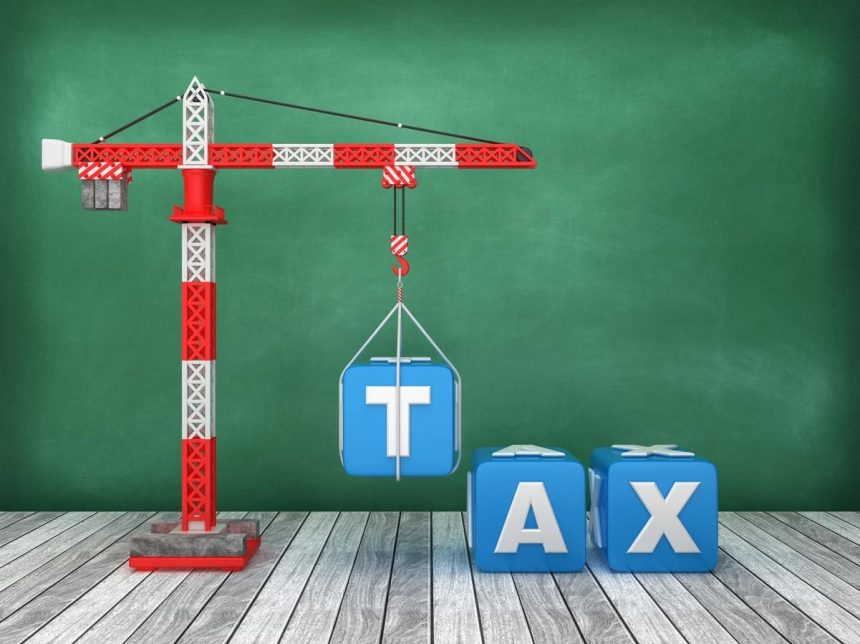It’s nearly summer, and the IRS and Treasury still have a long list of guidance under the Inflation Reduction Act energy tax provisions to finalize or release. Readers with clients hoping for a piece of the section 48C credits in the second round of allocations will need to plan their vacations for later in the summer, and everyone else should be prepared to spend time poolside reading regulations. This article will review a recent domestic content notice, take a preliminary look at the first round of the section 48C allocations, and then preview what you should be on the lookout for.
Domestic Content
The 10 percent bonus credit for using sufficient domestic content has proved to be as enticing a proposition as Congress probably hoped it would be, but that doesn’t mean it’s been easy for taxpayers to feel confident that they’ll qualify for it. The domestic content rules have been the object of considerable consternation, and that was still true earlier this month at a panel discussion on IRA updates during the meeting of the American Bar Association Section of Taxation, where the general hope was that forthcoming additional guidance would clarify the rules. IRS officials demurred that the agency was “working on it.”
On May 16 the IRS issued Notice 2024-41, 2024-24 IRB 1, which expanded the energy credit safe harbors. The safe harbors that are available under the prior guidance in Notice 2023-38, 2023-22 IRB 872, make application of the rules significantly easier to determine. Under last year’s notice, taxpayers with projects that include specified components have certainty about how to categorize them under either the steel and iron requirement or the manufactured products requirement, but the chart in the notice is not exhaustive. Construction materials that are primarily steel and iron must be manufactured in the United States, and everything else in the project — the manufactured products — must meet the 40 percent domestic content requirement if construction begins before 2025. That adjusted percentage will increase after 2025.
The safe harbors announced in 2023 were a happy development for those projects that qualified. For others, Notice 2024-41 added a new elective safe harbor to classify applicable project components and calculate a project’s domestic cost percentage. The new safe harbor applies to requirements for both steel and iron and manufactured products. It prevents tax credit seekers from having to get direct costs from suppliers, a sticking point under the 2023 notice. In announcing the new safe harbor, the government noted that “the Treasury Department and the IRS are aware that obtaining a manufacturer’s direct costs of manufacturing may require the taxpayer to gather cost data from multiple suppliers and manufacturers, including foreign manufacturers, and may present challenges for substantiation and verification.” That understates things a little. Suppliers generally balked at the notion of handing over their costs — and, by extension, their profit margins — to project developers. The solution that some taxpayers contemplated was to have suppliers disclose costs to third parties instead.
The new elective safe harbor provides cost percentage information that a taxpayer can use in calculating the domestic cost percentage and satisfying the adjusted percentage rule. The cost percentage information comes from the Energy Department, and the notice explains that the data it used in generating the percentages came from “a variety of sources, including datasets of system characteristics, price indices, U.S. survey data from the government (for example, the U.S. Bureau of Labor Statistics, Department of Labor) and private sector, public filings from corporations, and comprehensive interviews of manufacturers, installers, developers, and owners of the representative technologies.” If a taxpayer uses the cost percentages in the notice for its manufactured products and manufactured product components in order to meet the steel and iron requirement and calculate its domestic cost percentage, the IRS will accept it. But the election doesn’t allow cherry-picking. If a taxpayer elects to use the new safe harbor, it has to do so for every applicable project component and manufactured product component in the project for purposes of determining their eligibility for the domestic content bonus.
In a press release, Treasury said additional domestic content guidance is on the way, particularly for offshore wind and other sectors that aren’t included in the notice. There will also be further guidance on the new elective safe harbor table and proposed rules for projects using elective pay. Treasury noted that the government is still evaluating “potential options to further the IRA’s goal of incentivizing U.S. solar manufacturing, including solar wafer production.”
As anticipated, the initial allocation process for the section 48C advanced energy project credit — one of the only capped credits in the IRA — was highly competitive. The IRS received a large volume of concept paper submissions that requested a total of approximately $42 billion in credits, $11 billion of which was tied to energy communities. Results from round 1 of the section 48C program were announced at the end of March. There were three categories of allocations: clean energy manufacturing and recycling; critical materials recycling, processing, and refining; and industrial decarbonization. Over two-thirds of the allocations went to clean energy manufacturing and recycling projects in round 1. And as the IRS announced at the opening of round 1, $1.5 billion of the allocation went to projects located in energy communities.
The projects that received allocations came in a variety of shapes and sizes — from start-ups to established companies and from big projects to smaller ones — and covered a broad swath of technologies and geographic locations, noted Nicole M. Elliott of Holland & Knight LLP. She said projects that were likely to be placed in service earlier in the four-year time frame in section 48C(e)(3)(C) appeared to have been more attractive to reviewers. The DOE asked awardees if they would be willing to disclose their allocations, and the released allocations include highs of $255.6 million to Highland Materials Inc. to manufacture solar-grade polysilicon, $280.5 million to ArcelorMittal Calvert LLC to build an advanced manufacturing facility that will produce non-grain-oriented electrical steel for electric vehicles, and $135.9 million to Topsoe SOEC Production US Inc. to manufacture solid oxide electrolyzer cell stacks for the production of clean hydrogen via electrolysis.
Readers have known for a while that their summer holiday plans would need to be made for later in the summer this year, since round 2 kicks off as the school year ends. Preparations for allocating the remaining $6 billion in round 2 began with the release of Notice 2024-36, 2024-1 IRB 1, on April 29. The notice explains that the government expects to allocate $2.5 billion of that to projects in energy communities. “Round 2 should go similarly to round 1 in terms of review and process requirements,” said Hannah Hawkins of KPMG LLP at the ABA tax section meeting. Jaime Park of Deloitte Tax LLP pointed out that the updated Appendix A to Notice 2024-18, 2024-5 IRB 625, added helpful new examples of eligible projects under the subcategory of clean energy manufacturing and recycling projects for “other advanced energy property.” The revised appendix explains that if a project can reduce its carbon emissions to below 30 percent of an industry-specific benchmark, the following may qualify: “projects that expand, re-equip, or establish facilities for manufacturing or recycling of low carbon cement, concrete or components such as supplementary cementitious materials, low carbon iron and steel, low carbon aluminum, low carbon chemicals, low carbon pulp or paper, and low carbon glass.” Park added that it hadn’t previously been clear that such projects were eligible.
The government announced other good news, at least for the early birds whose concept papers are ready to go: The portal for round 2 opened on May 22, six days before the scheduled “open by” date of May 28. That means that submissions are due by June 21. Elliott said the same framework for analyzing a project’s chances in round 1 will generally apply to round 2. A project’s size or category shouldn’t deter taxpayers from submitting concept papers if the project qualifies under section 48C and will be placed in service in the right time frame, she said. “Every category was represented in round 1 allocations,” she noted, adding that section 48C’s goal of broadly encouraging decarbonization was evident in the allocations because successful round 1 projects included many that didn’t qualify for other IRA credits.
The announcement of the round 1 allocations piqued the interest of prospective credit buyers too. Credits under section 48C may be transferred under section 6418, and buyers justifiably view the fact that recipients of section 48C credit allocations have already been given a stamp of approval by the IRS and the DOE as a desirable trait. What impact that will have on the sales price of those credits remains to be seen.
What’s Next
The IRS and Treasury have done an admirable job of releasing guidance implementing the IRA’s new and revised energy tax credits, but there is still plenty of work ahead. The section 45Z clean fuel production credit, the section 45U zero-emission nuclear power production credit, and the technology-neutral production and investment credits in sections 45Y and 48E are all awaiting initial guidance. The clean fuel production credit in particular is attracting many new and novel projects.
Read the full article here
















